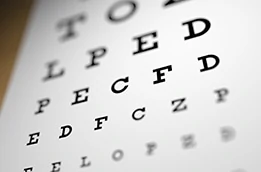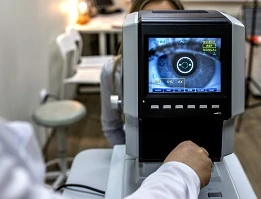What Is the LASIK Success Rate?
What is the success rate of LASIK?
The LASIK success rate – or LASIK outcomes – is well understood with literally thousands of clinical studies looking at visual acuity and patient satisfaction. The latest research reports that 99 percent of patients achieve better than 20/40 vision, and more than 90 percent achieve 20/20 or better. In addition, LASIK has an unprecedented 96 percent patient satisfaction rate – the highest of any elective procedure. (Journal of Cataract & Refractive Surgery, Vol. 42, Issue 8, August 2016, Pages 1224-1234).
Considering the above research, it is clear that LASIK is a safe procedure that helps many patients improve their vision every year. For those considering a vision correction procedure, understanding the LASIK success rate is an important part of your research as well as understanding what these rates mean for your own vision goals.
Understanding the LASIK Success Rate: How effective is LASIK?
One of the most common questions eye surgeons are asked is: What is the LASIK success rate?
To help answer the question, let’s break down the definition of LASIK outcomes. LASIK outcomes are measured by a variety of factors, including visual acuity – the sharpness of your vision – and overall patient satisfaction.
Visual Acuity is the sharpness of your vision. It’s a static measurement usually taken in a doctor’s office while you are sitting still. Most consider 20/20 (the ability to read the eye chart at 20 feet) to be “normal.” However, the measurement of visual acuity – or 20/20 vision – may not completely define the quality of vision for everyone. Some people further define the quality of vision by degrees of clarity, contrast sensitivity, reaction time, and other factors.
Researchers have looked into LASIK patient satisfaction, including how happy patients are with their vision and how it has impacted their quality of life.
When talking about success rate, it’s also important to consider the LASIK complication rate, side effects, and understand potential risks.
When talking about the LASIK success rate, there is only one measurement that matters: Does it give you what you want? Does it help you achieve your own vision goals? Is your lifestyle or your career enhanced?
One Measurement that Matters when it comes to the Success Rate of LASIK Eye Surgery
Studies about patient satisfaction after surgery show that one of the most important factors is whether the surgery meets the patient’s expectations. To figure out your LASIK success rate, ask yourself what you expect to get out of laser vision correction surgery. Why are you thinking about LASIK? How do you think LASIK will make your life better? A good place to start is to write down your expectations early in the process. Then, after you have chosen your LASIK surgeon, this will be extremely valuable both for you and your surgeon in mapping out a recommended course of action. A lot of people have heard good things about LASIK and expect that it will improve their lives. But they don’t always take a long, detailed look at what that means – what LASIK will help them do, or do better, or enjoy more. Setting personal vision goals helps the person define their LASIK success.
It also helps the surgeon understand why the person wants LASIK – and how to guide them through their LASIK experience and set appropriate expectations.
Why Do You Want LASIK?
Reasons for wanting good or even excellent vision are as different as the people who are thinking about LASIK. For anyone with vision problems, there are a million reasons to consider LASIK. The good reasons – the reasons that lead to LASIK satisfaction and LASIK success – are the ones that matter to you, because you want to change the way you see in life.
For you, LASIK success might lead to getting glasses out of the way of your daily life. Having great vision at the ready 24/7 might be important for your current job or your dream job.
OK, then – what are some of the reasons people turn to LASIK? What are they looking for in LASIK success?
One thing you think of when you think of success is your career. Not surprisingly, people turn to LASIK to do better at their jobs – or to get their dream jobs.
For example – are you a police officer, firefighter, EMT, or other first responders? If so, you need great eyesight. But you also have to work in conditions where it’s tough, and sometimes impossible, to wear glasses or contact. Imagine pursuing someone through thick underbrush and getting slapped in the face repeatedly by branches. There’s a good chance you’ll lose your glasses or have your contacts damaged. Either would put you at risk. Or think of what a firefighter routinely has to deal with – smoke, water, and steam. For you, LASIK success might mean being able to do your job in tough conditions – like fires or arrests – without your eyeglasses or contact lenses getting in the way.
Are you in the military? Your LASIK success might be similar – the ability to serve in harsh desert, jungle, or arctic conditions where eyeglasses or contacts would be a major problem. But even for members of the military who aren’t in combat assignments, LASIK can make an enormous difference. If you’re a maintainer, your work environment is filled with oil, grease, dirt, and grime, any of which can be a no-go with conventional eyewear. Or perhaps you do close-in technical work where precise vision matters. Whatever your role and branch of service, your LASIK success means that you’re better able to serve.
For pilots – in military combat and support roles, in the airlines, and general aviation – having the best eyesight possible can be a matter of life and death. The Navy and Air Force were among the earliest adopters of LASIK to make sure the pilots with the best overall qualifications weren’t ruled out because of vision problems. Your LASIK success as a pilot is measured by your ability to do your job or realize your passion for flight.

People in many careers depend on LASIK. Professional athletes turn to LASIK because they need a special kind of precise vision – for example, the ability to see depth and contrast, so they can see and react to the motion of a ball seen against a crowd, or read its spin or know where it’s going. And playing a sport means you need to deal with tough conditions, too – dirt, dust, wind, glare, and sweat. That’s not an easy environment for eyeglasses or contacts. This might explain why so many athletes, like Tampa Bay Rays catcher Wilson Ramos, Houston Rockets point guard Chris Paul, and Atlanta Falcons linebacker De’Vondre Campbell, have relied on LASIK to protect or jump-start their performance and sharply improve or extend their careers. They also find that LASIK recovery time is short, so they can be back in action fast. An athlete’s LASIK success rate? It’s measured in batting average, completed passes, tackles, and three-pointers.
People in many other careers turn to LASIK – photographers, artists, engineers, and scientists who need the sharpest possible vision to do their work. There are hundreds of thousands of people who can say that their LASIK success rate is their ability to do great work, to work at what they love, or to work at all.
Success might mean playing a sport, flying a plane, chasing your toddler, or looking your best
People turn to LASIK not just for work but also for play and to follow their passions. Your LASIK success might be measured not by your job but by how much you’re enjoying your lifestyle and your life.
The same factors that make LASIK great for athletes and first responders can make a difference for people who play sports or love the outdoors. You don’t need to be a professional athlete – you might love playing in your softball league, or catching a frisbee in the park, or going hiking or camping. The conditions are just as challenging as they are for a pro – and the convenience of LASIK can transform your experience. The same goes if you swim or surf or sail – sand, spray, and harsh sunlight don’t mix well with glasses or contact lenses, but they’re no trouble at all once you’ve had LASIK. And if you’re a skier who has to deal with snow spray and glare – the temperature may be different than for boaters and beach lovers, but the freedom you get from LASIK is just the same.
We talked about how LASIK benefits professional pilots. But not all pilots are professionals – thousands of people own or rent airplanes and fly for the pure joy of flight. They can benefit from LASIK just as professionals can.

The same goes for photographers. For every pro who makes a living from photography, there are hundreds of thousands of people who take photographs simply because they love to. If you’re one of those people, you can sharpen your vision, make it easier to use your cameras, and produce better results, all thanks to LASIK.
What if you don’t pursue an active lifestyle? There’s still plenty that LASIK can do for you. Some people think of eyeglasses as a fashion accessory, but many people don’t. Thanks to LASIK, you can throw away your glasses and show your best face. People also turn to LASIK when they’re on the threshold of major life events – graduating from college, getting married, starting families (ever tried to run after your small kids while keeping your glasses in place?), or setting out on new adventures after they retire. LASIK can liberate you from your glasses or contacts and set you on the path to your next phase of life.
And, of course, LASIK success doesn’t have to involve any activity at all. Many people measure LASIK success rates just by the pure pleasure of having the best possible vision and the freedom to do without contacts – or to never again be forced to grope on the nightstand to find their glasses in the middle of the night.
No matter what you love to do in life, there may well be a LASIK success story waiting for you.
Talk to a surgeon, define your vision, and start on the path to success
So how should you start to build your own LASIK success story? The questions you really need to ask yourself are “How do you see yourself benefitting from LASIK?”
“What do you hope to get out of LASIK?” “Why does great eyesight matter to you?” And “How are your glasses or contacts getting in your way?” “How do they keep you from living life the way you want?”
The next step is to sit down with a LASIK surgeon. It’s only by talking with a surgeon that you can find out whether you’re a good candidate for LASIK and ask your questions about the LASIK success rate. The surgeon can help you understand what to expect from the procedure, what the experience will be like during and after surgery, and how your life and your lifestyle will change.
There are resources here to help you find a qualified LASIK surgeon in your area and suggestions for questions you can ask your LASIK surgeon to make sure you find out what you need to know. Do your research, get informed, and work carefully to set your vision goals.
You’ll soon be well on the way to LASIK success.




